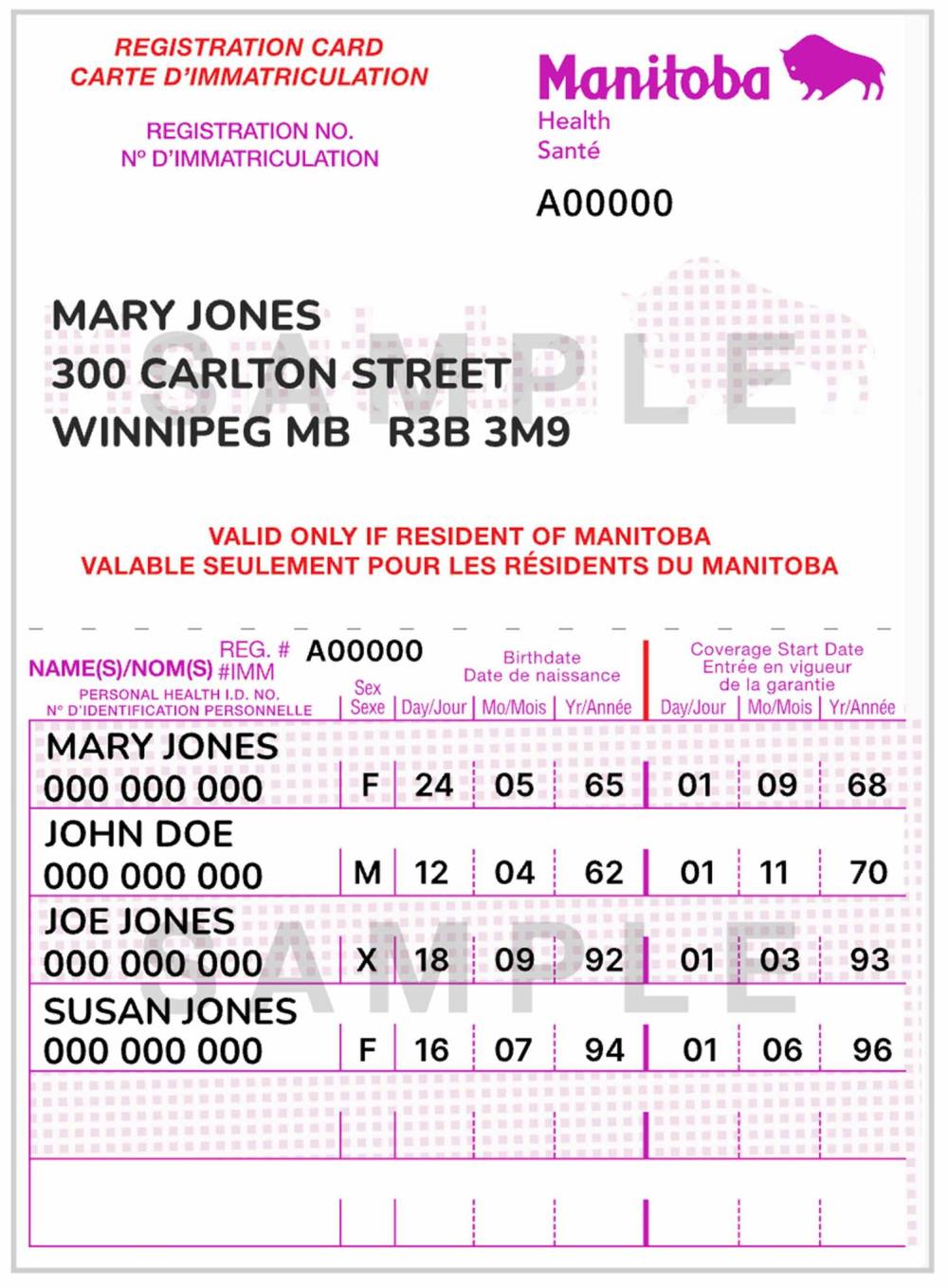
It’s difficult to believe with today’s technology that Manitobans still carry around paper copies of their provincial health cards. There have been calls for years to replace them with a more robust card, such as a plastic version. For reasons that remain unclear, the provincial government has never made that a priority. Until now.
We’ve all heard the stories, or maybe experienced it first-hand: Manitoba’s paper health cards often go through so many washing machine cycles — or just deteriorate over time — that they become almost illegible. In some cases, they become unreadable.
Patients can’t access the publicly funded health-care system without showing their Manitoba Health card. If a clerk behind the counter at a hospital, a clinic, or a doctor’s office can’t read it, patients usually have to pay out of pocket for their visit.
An example of a Manitoba Health card.
That violates the principle of Canada’s universal, government-funded health-care system — that patients should not have to pay directly for medically necessary services.
The NDP government announced last week it plans to make the switch from paper to plastic health cards within a year and to offer a digital version of the document.
It is long overdue. Most other provinces have plastic health cards. Some offer electronic versions. Manitoba would be catching up to the industry standard.
Details on the material and design of the cards, as well as the cost to produce them, will be released in the coming months. The announcement is also part of a broader plan to move the health-care system away from paper and fax machines and towards electronic patient records.
If the government makes good on its commitment, it would fulfil a campaign pledge made by the NDP during the 2023 election to “work toward the elimination of paper cards.”
The NDP is also promising to streamline the application process to obtain a card, which has been dogged in recent years by long wait times. The province has eliminated a backlog that reached 24,000 applications last year by adding more resources to the system.
However, wait times to obtain a card are still too long. The NDP has pledged to cut the target wait time in half, to two weeks from four weeks.
The switch to a modern health card could also have a symbolic significance if the NDP government makes good on its most important election pledge: to fix the beleaguered health-care system.
Manitoba’s fading and tattered health cards have come to symbolize a medical system in need of change and modernization.
Health care in Manitoba has been plagued by long wait times, chronic shortages of front-line staff and a lack of access to primary care.
The NDP allocated more resources to health care in its first budget unveiled on Tuesday. That will provide short-term relief for a health-care system that has been starved of resources for most of the past eight years.
However, just like eliminating outdated paper health cards, the province must find new and modern ways to deliver health care that meets the needs of a growing and aging population.
It is only by doing things differently and using modern technology that the province can truly improve heath care over the long term.
Manitobans need a modern health card that can survive a washing machine cycle or two.
What they need even more is a properly functioning health-care system they can rely on.


